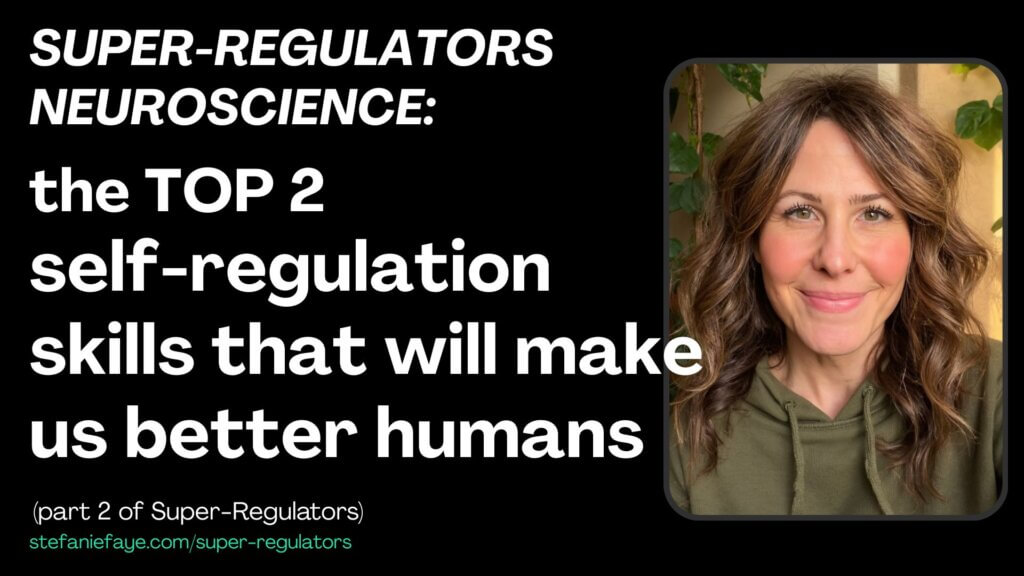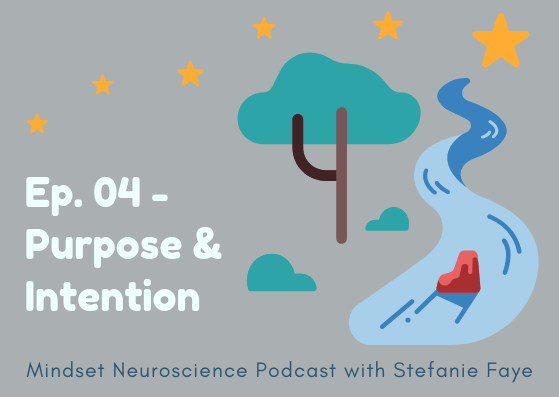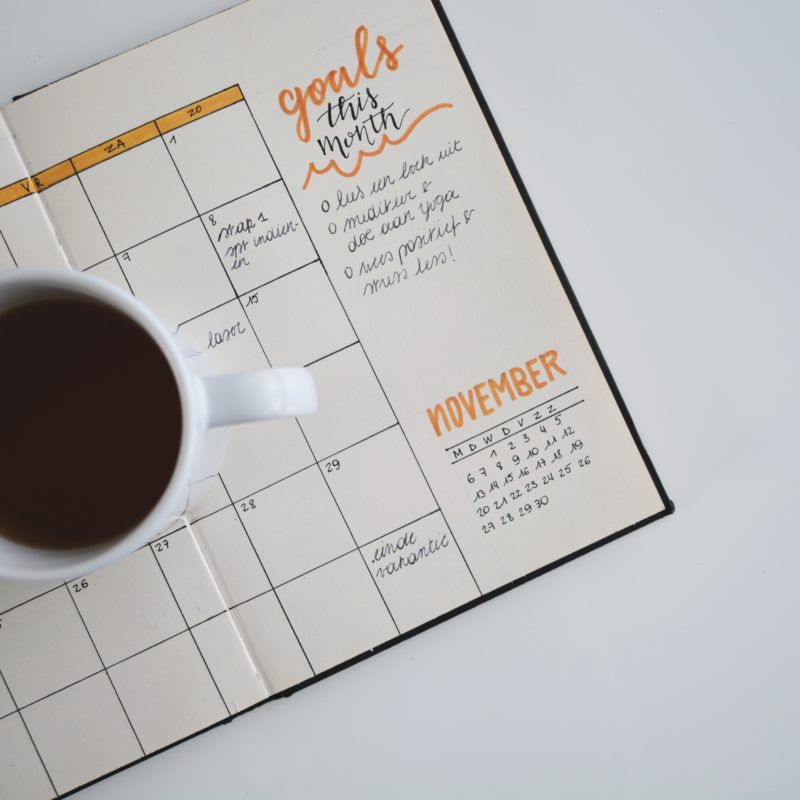When you feel a way you don’t like to feel… do you know how to get out of it?
For those feelings you really enjoy... do you know how to improve the chances you’ll feel them more often?
Emotion regulation (self-regulation) is a LIFE-CHANGING skill that helps us get better at working through uncomfortable feelings and achieving ones that help and heal.

Self regulation is a skill that can take our life to the next level.
It has the potential to catalyze our careers. Emotion regulation skills can also transform our relationships into what they are truly meant to be: pathways to deep connection, acceptance, autonomy and individuality
The reason?
Self regulation is in a sense simply nervous system regulation.
Without it, no matter how much we may believe in our potential to learn and evolve, if our system is under activated, we may lack what is needed to stay alert, focused, and ready to integrate and receive information that can help us with the changes we seek.
If our nervous system is overactive, we may face similar challenges, and also lack the restorative nature of what it means to have a regulated nervous system for rest, an energy recuperation.
Dysregulation in any form can prevent us from having healthy and fulfilling relationships, which is another essential component of overall life functioning.
Learn about 2 key types of Self-Regulation in this video
Regulating your emotional state does not mean always seeking calmness or stoicism.
It’s about riding the waves and fluctuations of internal and unconscious forces, that impact and influence
- How your heart beats, how your skin conducts electricity, flushes, and sweats, tingles...
- how the muscles in your throat, tighten or relax to speak, sing, scream or sigh...
- how your eyes focus on one thing versus another.
All of these micro fluctuations affect your next move on the chessboard of life.
If we're finding that we have similar patterns that we don’t like and these patterns keep repeating, then we may want to think about what it is that keeps us in the same cycles.
It might be relationship patterns, arguments or conversations that you have over and over again with the same people that seem to go nowhere or make things worse. Or it might be habits that you want to improve, but you just can’t seem to.
It might be anxiety or stress about seeing similar cycles repeating in our society and communities over and over again.
If you'd like to understand why this happens and what we can do to disrupt these patterns, SELF-REGULATION is the Gateway.
By learning about multiple ways to self-regulate, we can gain greater control over how we respond to life's challenges.
This helps us increase our sense of agency and control, which contributes to higher levels of psychological safety and resilience.
But Self-regulation is not a trait we are born with.
It is a skill we can build—one neural circuit, one moment of awareness at a time.
THE NEUROSCIENCE OF SELF-REGULATION
Neuroscience research shows that self-regulation is not a fixed trait, but a dynamic set of skills rooted in a complex dance between our prefrontal cortex (the "executive" part of the brain) and deeper, more reactive and reflexive systems in our brain-body.
Studies indicate that the ability to pause before reacting—what some call the "space between stimulus and response"—is linked to increased activity and connectivity in the prefrontal cortex with other systems in the brain. This is especially linked to inhibitory control - which is one of the biggest factors in multiple realms of mental health, wellbeing and relationship quality.
But here's the catch: self-regulation is highly context-dependent.
The circuits we need for self-regulation can be less accessible when we’re tired, hungry, stressed, haven’t slept or have been doing a lot of decision-making (which includes the thousands of micro-decisions required when scrolling on the internet for too long).
The good news is that with intentional effort, we can train and strengthen our self-regulation circuits.
One way to do this is to increase your ‘range and repertoire’ for how you deal with different stressors, situations, thoughts, moods and energy levels.
You can do this with:
- disengagement /suppression
- engagement/enhancement
of nervous system states and arousal.
Disengagement and down-regulation:
If we are over-stimulated, over-thinking, if it feels like our mind is racing, or we can’t control our reactions to others…then suppression and inhibition is the key. This means we need to use our executive functioning abilities to choose to retreat, quiet down, be still, reflect, meditate, journal.
A racing mind - a mind that feels out-of-control, anxious, distressed is reflecting hyper-arousal and over-activity.
Inhibitory and down-regulating abilities can be learned through meditation, attentional training, various types of cognitive training and mindfulness activities.
Engagement and up-regulation:
If we are feeling down, resigned, hopeless, helpless, disconnected, disengaged, depressed, if it feels like nothing is ever going to change or get better, or we can’t get ourselves to do the things we know will help us achieve our dreams, then initiation and up-regulation is the key.
We need to be able to enhance emotions, increase arousal, positive emotions and exploration when we need it, using sympathoexcitatory, dopaminergic circuits.
We can do this by:
engaging in movement, play, sports, fun social interaction, listening to fast-paced music (especially if there are loud base frequencies), punching pillows, hitting balls, and talking loudly. Anything that forces your breath to quicken and increases blood flow to skeletal muscles for limb movement and mobilization (the video below goes into this, as well as my article and video on the 9 tiers of nervous system responses.
WHEN SELF-REGULATION FEELS IMPOSSIBLE: WHAT THEN?
There will be days when your nervous system is overwhelmed, when old patterns resurface, or when trying to do better feels out of reach. This is not a failure—it is a signal.
Sometimes, the most powerful act of self-regulation is simply to notice without judgment and seek support, rest, or gentle reflection.
Always strive for Awareness first. That is the bridge from connecting unconscious, reflexive, automated reactions and behaviors to our ‘neuronal workspace’ - where we have a chance to use some of those powerful prefrontal networks to help us slow down, pause, switch and choose something that feels better.
Today- this year- it is more important than ever to get better at regulating our emotions and nervous systems.
Here is an article with 5 keys to getting better at self-regulation
How to not take things personally: The science of stimulus-response - StefanieFaye


